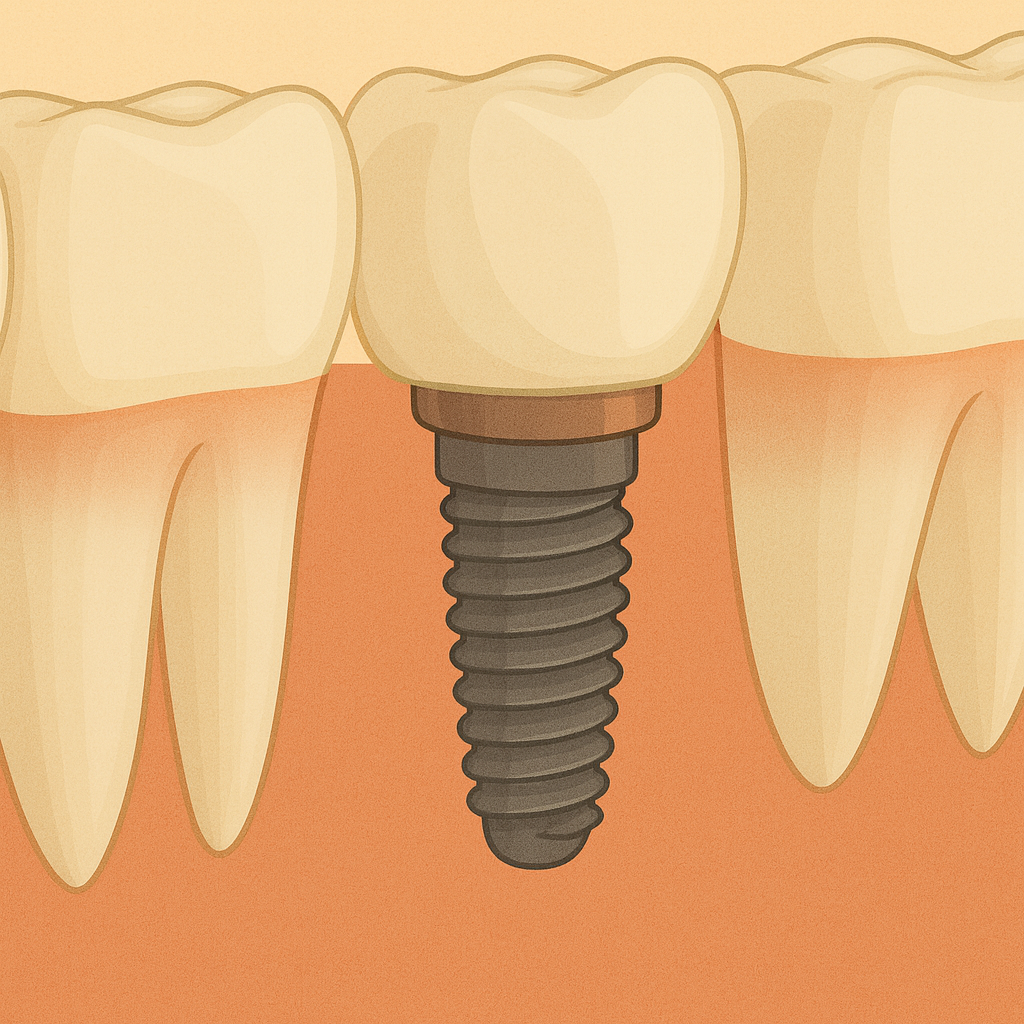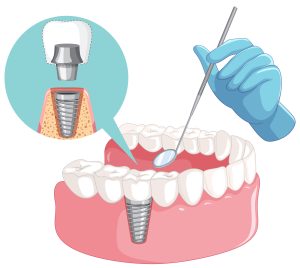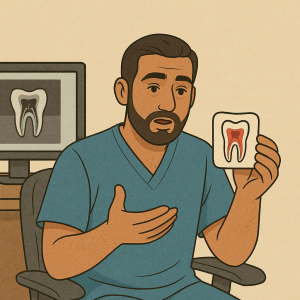What Sensations Are Normal?
– Pain at the surgical site, easily managed with painkillers.
– Swelling (sometimes significant) may appear on days 2–3 and usually decreases by day 3–4.
– Mild fever (up to 38°C), bruising, or limited/painful mouth opening may occur.
– Temporary numbness or altered sensation in the face or surgical area is possible.
When to Contact Your Dentist
– Persistent or increasing pain beyond 5 days.
– Bleeding lasting over 24 hours. Contact your dentist immediately in case of heavy bleeding.
– Swelling that does not begin to subside within 5 days.
– Any questions or concerns — please reach out to your doctor.
What to Avoid
– Do not eat or drink anything for 2 hours after surgery.
– Do not touch, rinse, or clean the surgical site yourself.
– Avoid sauna, hot baths, tanning, and heavy physical activity for 3 days.
– Avoid alcohol, especially when taking medications.
– Limit smoking to fewer than 5 cigarettes per day.
What to Do
– For the first 3 hours, apply a cold compress (with cloth) on the surgical area: 5 minutes on, 5 minutes off. Repeat as needed.
– Eat soft, non-hot, non-irritating food for 3 days.
– Maintain excellent oral hygiene. Change your toothbrush. Do not use an irrigator near the surgical site.
– Take all prescribed medications exactly as instructed.
– Postoperative monitoring continues until suture removal at your scheduled follow-up visit.
Follow-Up and Further Treatment
– Your doctor will schedule all necessary check-ups.
– The implant healing period is 3 to 6 months. You must visit your surgeon 3 months after implant placement.
– After healing, you may need gum shapers, soft tissue grafts, and temporary crowns — these are essential before final prosthetic placement.
– Maintenance: Every 6 months, visit your periodontist or hygienist for supportive therapy and professional cleanings.




